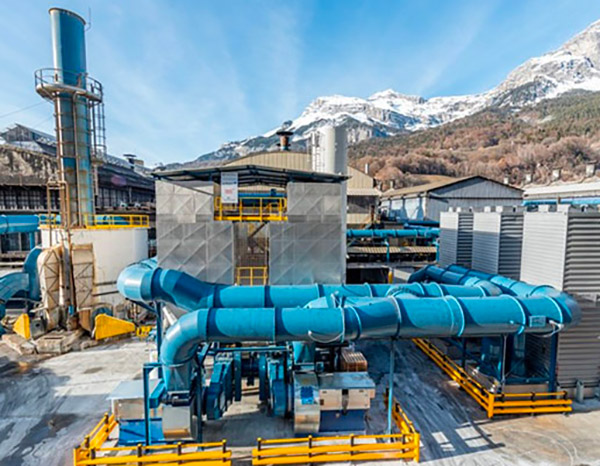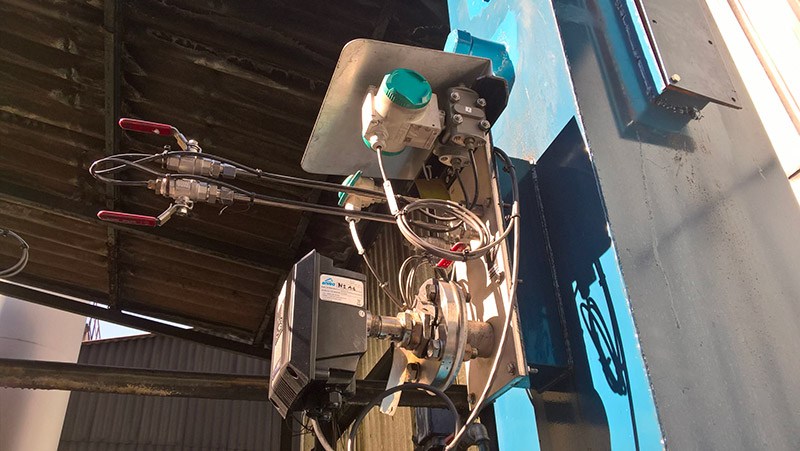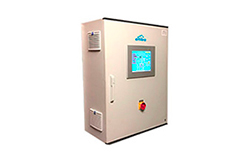
The group has 5,000 employees worldwide and 27 plants, including two in France (Passy and Saint Martin d’Hères). The Passy site, established in 1896, covers 14 hectares and has 160 employees. It specializes in the production of synthetic graphite based on petroleum coke. Its production, 9000t/year, is 85% exported. The plant is certified ISO 9001 and ISO 50001 (energy performance improvement).
Indeed, it concentrates in a narrower space than in the plain all human and industrial activities and the resulting polluting emissions. Atmosphere Protection Plans have thus been put in place by the prefecture since 2012, imposing more restrictive emission limit values on the valley’s industries compared to other less exposed sites.
Interview with Mr. Pierre Praicheux (Site Manager) and Mr. Sylvain Collet (HSE Manager), SGL Carbon Passy.
Why did you equip the plant with dust analyzers?
Our decision was based on a new regulatory requirement. The prefectural classification order of January 2018 mentioned the need for the Passy site to set up continuous measurements of hourly dust concentrations and flows for about twenty stacks.
Until now, the plant was equipped with triboelectric probes (all or nothing measurement of emissions). Our objective was therefore multiple: to equip ourselves in order to be able to monitor dust emissions live, anticipate possible maintenance operations and improve preventive maintenance. We also wanted to quantify dust emissions during the pollution alert episodes that take place every year between November and March, depending on the concentrations of pollutants in the air.
The prefecture activates alert levels with specific actions to be implemented by local industries and potentially the shutdown of certain facilities.
What solutions have you implemented?
In order to meet the regulatory requirements, we have tested for one year two different technologies for the continuous measurement of emissions downstream of the flue gas treatment: 5 stacks were equipped with electrodynamic analyzers ENVEA QAL 991 and 6 with optical analyzers from another supplier.
At the end of the test period, we chose the ENVEA particulate CEMS analyzers because they guarantee optimal precision and reliability, as well as reduced maintenance. Indeed, the electrodynamic technology makes it possible to do without fans and mechanical elements in the analyzers. Knowing that several of the measurement points are only accessible via an aerial platform, this also allows us to limit the costs in case of intervention. Finally, we were very satisfied with the technical support offered by ENVEA.
The decree also includes the obligation to carry out comparative measurements. Every year, a COFRAC accredited organization verifies the calibration and adjustment of the analyzers. No drift was detected during the comparative measurements carried out since the installation, which confirmed our choice of ENVEA equipment to equip the 21 stacks.
Over the year 2021, we have experienced 2 pollution alert episodes in the valley – from January 12nd to 13th, level 1 and from February 24th to 28th, level 2 – which led to the shutdown of 3 stacks in February. Thanks to the analyzers, we have the capacity to give in detail the hourly flows of avoided emissions, i.e. of the order of 5 grams of particulate per stack and per day.

What are your latest investments related to air pollution reduction?
SGL Carbon has invested €15 million since 2005 to reduce the environmental impact of the Passy plant. The latest major project is the installation in 2018, at a cost of €4 million, of a system to treat odors and fumes for the graphite halls. It has a treatment capacity of up to 120,000 m3/h.
The flue gas treatment system features two stages: the first stage, for the treatment of dust and acid gases (SO2, HF), includes bag filters and a lime injection system. The second is dedicated to the treatment of odorous gases (mainly H2S).
This flue gas treatment system has enabled us to reduce the site’s channeled dust emissions by 80% and to guarantee stack dust emissions of less than 2 mg/Nm3.
Installation details:
- ElectroDynamicTM dust monitoring: ENVEA QAL 991
The analyzers are QAL1 certified and offer an accuracy 6 times higher than required by the EN 15267-3 standard (uncertainty 3.7% against 22.5%).
- Flue gas flow measurement by micro-Venturi and differential pressure: StackFlow 100
Verwandte Inhalte
Informationsanfrage

